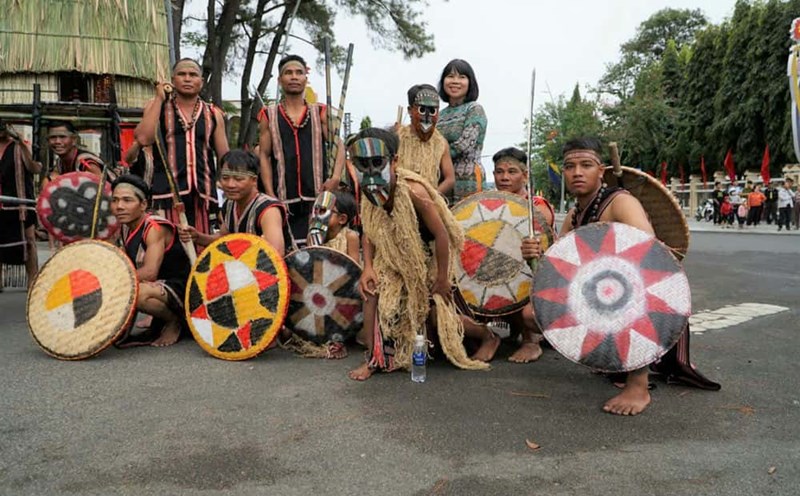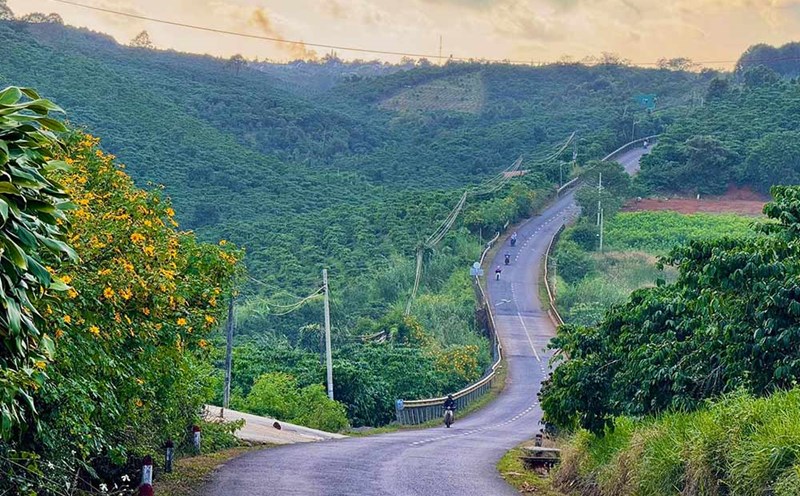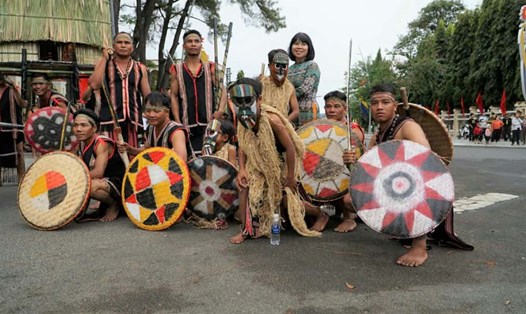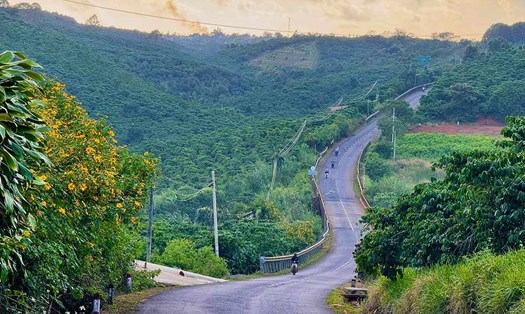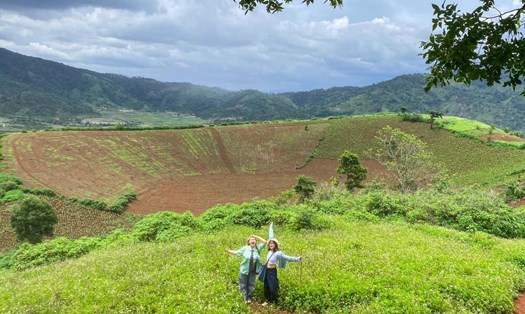Before entering, he had excitedly called me to make an appointment to eat "Central Highlands food", partly to satisfy his craving and nostalgia, and partly because he wanted to show off to his fellow writers, he wanted to prove that he was once the owner of the Central Highlands, and was well-versed in the Central Highlands, especially its cuisine.
The first dish is leaf salad.
This dish originated from Kon Tum city. I guess that this dish, which is thought to be a pure Central Highlands dish, is not a native Central Highlands dish, but was brought in by people from the North, and originated from the famous fish salad of the “drinkers”, but in my decades in the village, I have never seen the locals “develop” this dish.
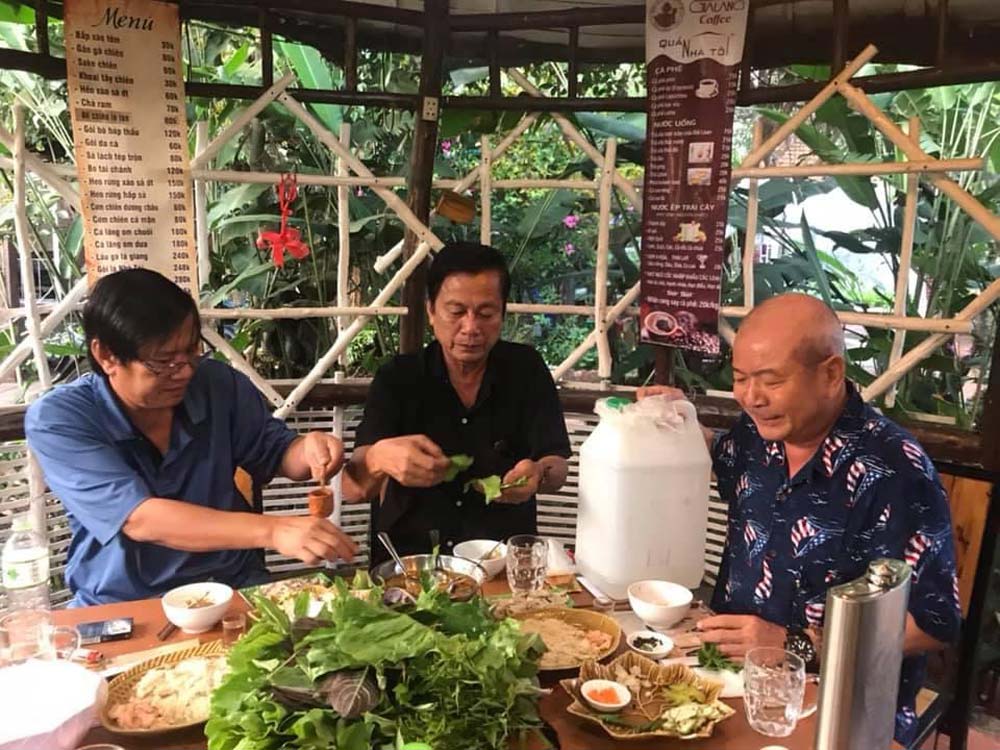
Of course it might be related to the Central Highlands because it exists in a Central Highlands city, and now spreads to a few more places, and 2, the main thing that makes it, the soul of that dish, is forest leaves.
As for wild leaves, humans can eat anything that animals can eat, except of course... poison ivy. A real leaf salad tray has about a few dozen types of leaves, very few are from the garden, most are from the wild. To get enough leaves for a restaurant, one must have a very professional army.
As for why it is said to have originated from the North, because that region has a very delicious carp salad, especially for drinkers. Many types of leaves are brought back, but the important thing is the fish and the "ultimate passion" is the dipping sauce. There is one thing that cannot be missing in that divine dipping sauce: fermented rice.
People in the Central region do not eat me, the Central Highlands do not eat me, only the North and the South eat me, but the dipping sauce of the Central Highlands leaf salad must have me. It is almost like the dipping sauce of Hue banh khoai, but the dipping sauce of banh khoai does not have me. Me creates the flavor of the dipping sauce for Northern fish salad and Kon Tum leaf salad, of course Northern fish salad is more elaborate, it also has crab roe, sesame, peanuts, and a few other things. The dipping sauce of Hue banh khoai has pig liver, lard, etc.
Instead of carp, it is Kon Tum leaf salad, which is made of pork belly and lightly stir-fried shrimp. The dipping sauce is not as elaborate as carp salad but it is also easy to... scoop. This leaf salad is also very famous, it is also listed in the travel guide...
This leaf salad has many mysteries, for example, each leaf package like that, put in a chili pepper, that kind of chili pepper, the fruit is a little bigger than the tip of a toothpick, eating it alone is very spicy, but when put in the leaf package, along with a green pepper, the spicy taste is completely gone, or to be exact, it has a spicy... sweet taste.
Many people cannot eat spicy food, at first they were hesitant, but after being encouraged, after trying it, they... happily ate it forever. It turns out that there is a chemical reaction that changes the taste. It is also the... support of each other when the ingredients of the salad blend together. But above all, at the banquet table, in front of us is a tray of... art, an interesting harmony of colors and flavors.
Green leaves, when placed next to each other on a tray, turn out to have many shades of green. It leaves a restless green area. Restless because, on the green side there is purple, inside the green there is blue, on the green there is pink, next to the green there is brown and so on, all shades and colors, very restless in a tray of food called leaf salad.
But now, even though Do Tien Thuy is still trembling with joy over the leaf salad, because I guess he mainly eats... memories, I gently remind him that the leaves that make him tremble with joy are mostly picked in... the garden. Very few, exactly two or three types of wild leaves, as for mustard greens, lettuce, coriander, perilla leaves... who calls them wild leaves.
Oh, the Central Highlands forests that our people, especially writers, often add the adjective "great forest", now even the leaves for salad are picked from... the garden.
Is bamboo rice
Actually, lam is a verb, the name of a grilled dish (made of bamboo tubes) of some ethnic minorities in the North, while the people of the Central Highlands have different names depending on each ethnic group, for example, the Jrai people call it "Aoi Brong", which means burying in the fire, if you cook rat meat like that, it is "Anham tokuih Brong", "Anham Brong" is a word describing a dish cooked in bamboo tubes (In the Central Highlands, the main material is reed, very little reed...).
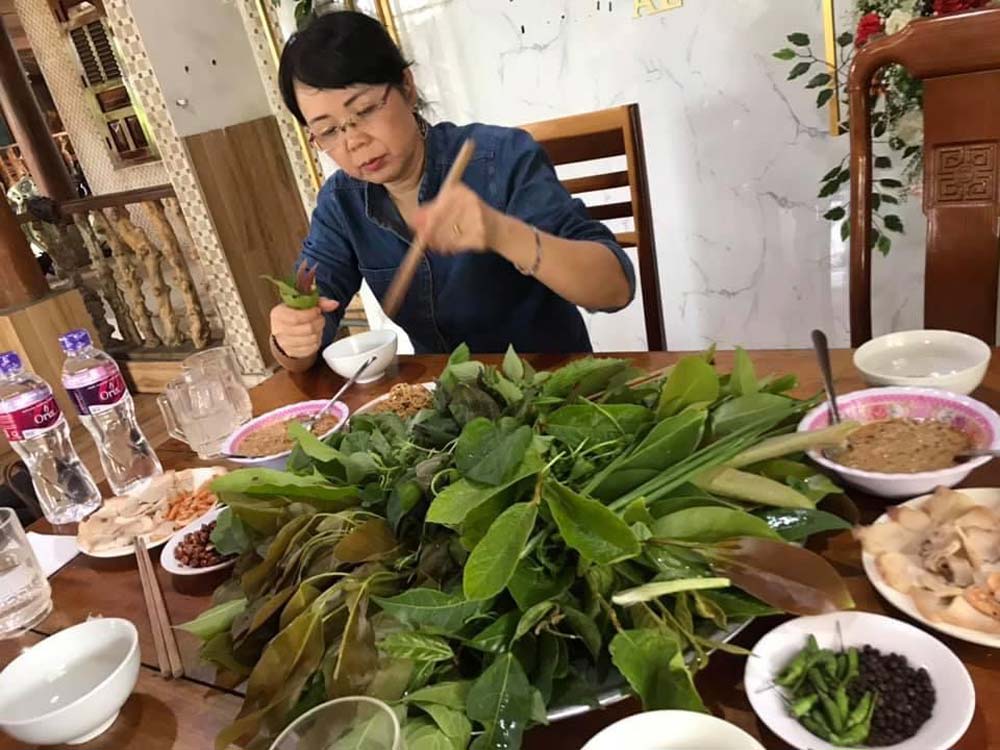
It is a way of cooking from the time when bronze, iron, aluminum... had not appeared yet. People used bamboo tubes, put rice in the bamboo tube to make rice, put meat in the bamboo tube to make grilled meat... And so, lam is a verb, a way of processing, almost like the cooking word of the Kinh people, but it is not a noun to refer to the rice dish we sometimes eat like today, as a specialty.
This dish is becoming more and more attractive, because like the Kinh people, now they cook rice in an electric cooker, and once in a while they get to eat a meal cooked in a cast iron or copper pot, which is like eating a specialty, especially burnt dishes. So the bamboo tube rice, which is commonly called Lam rice, is now available in almost every restaurant, even restaurants that have nothing to do with the Central Highlands. And it is convenient in that each person has a tube the size of a glove, replacing rice or congee after... drinking, and it is just right.
Another dish that almost every restaurant in the Central Highlands cities now has is wild vegetables. There are many types of wild vegetables, referring to vegetables in the forest. But now, as we know, the forest is no longer...vegetables, only taro, don (still but few), tau bay, etc., so people have started calling the type that used to be real wild vegetables, but the name the Central Highlands soldiers used to call it "rau lui" (leaving behind the stream bank), because it keeps growing, keeps creeping along the stream bank, under the layers of forest leaves, the purple leaves and stems are wild vegetables. The Central Highlands soldiers during the war were fed up with them, now they are...a specialty.
But as mentioned, now that the forest is scarce, wild vegetables are scarce too. So people bring them to the garden to plant. And strangely, this type of wild vegetable grows faster and better than grass, turning the whole garden purple, and it grows back immediately after being cut.
The chefs prepare three main dishes for this dish: one is boiled with Binh Dinh crab sauce, two is stir-fried with garlic, and three is used as hotpot vegetables. But unfortunately, if you eat these vegetables picked from the real forest, then these “garden-grown wild vegetables” will lose their characteristic aroma and will be much blander. The good thing is that they are 100% clean vegetables, because they are easy to grow, do not need fertilizers or pesticides.
Now, in restaurants in the Central Highlands, even big restaurants, wild vegetables (also known as rau lui) are often the first "priority" to order.
Finally, two bowls of pho.
And another dish that the writer who “devoted his entire youth to the Central Highlands” had to eat and show off to his friends was pho... two bowls. This colonel, I thought he would not have eaten this dish, because his travel schedule was mainly in Kon Tum, he only stopped in Pleiku to fly, and this dish must be in Pleiku to be authentic.
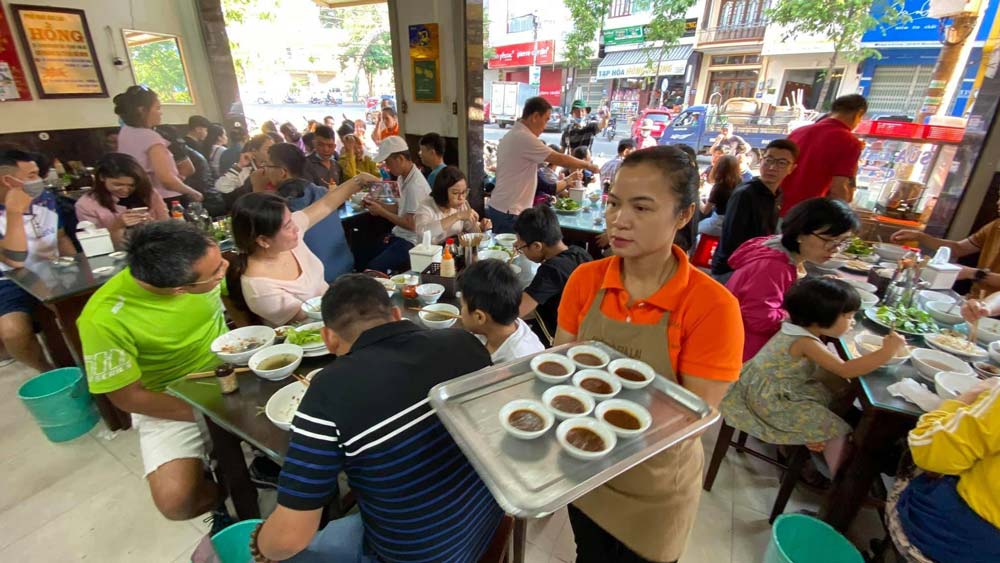
And even in Pleiku, there are only a few restaurants worth eating at, not all of them, although there are many dry pho restaurants with 2 bowls on the street. However, before flying, he found a famous dry pho restaurant in Pleiku, ate quickly and then rushed to the airport.
I left him with his bowl of pho, and went to his friends' table to show them how to eat it. In my opinion, the weakest point of the dried pho shops in Pleiku, and now many places in the Central Highlands, is that they don't show customers how to eat it, they just bring it out and the task is done.
It's like the first time, some people ate Thuong Tu (Hue) banh khoai. When they entered the restaurant, they brought out raw vegetables and broth before making the pancake. The customers sat down and finished eating the vegetables and broth, then praised it as delicious and asked for the bill. But that broth, eaten with raw vegetables, and with some figs, really didn't need the real pancake.
With dried pho, you have to know how to eat it well, that is, stir the pho strands until they are loose after adding a little soy sauce, black bean sauce and bean sprouts. I often advise my friends to tell them to use chopsticks and spoons to stir like farmers used to stir straw (nowadays, few people know how to stir straw?), so that it is even, loose and flavorful.
I remember some female cadres from the Writers' Association Museum in Hanoi came in, I took them out to eat, one of them asked for another... bowl of pho cake, even though she looked so pretty, so thin, so gentle...
Many people, when eating dry pho without instructions, fumble for a while, get angry, and then... pour a bowl of water into the bowl of pho. Oh my god, it becomes an inedible dish, because if you eat pho with water, you have to order it from the beginning, they make it differently, but now the water is cold, pour it in, it's as cold as cold rice, bland as water... Ho sea.
The plane landed, the first message from the colonel-ranked writer was: "The poor peasants are satisfied, sir." And I also felt that I had the responsibility to satisfy them like him.
* Article from the Central Highlands Spring Labor publication - 2025

